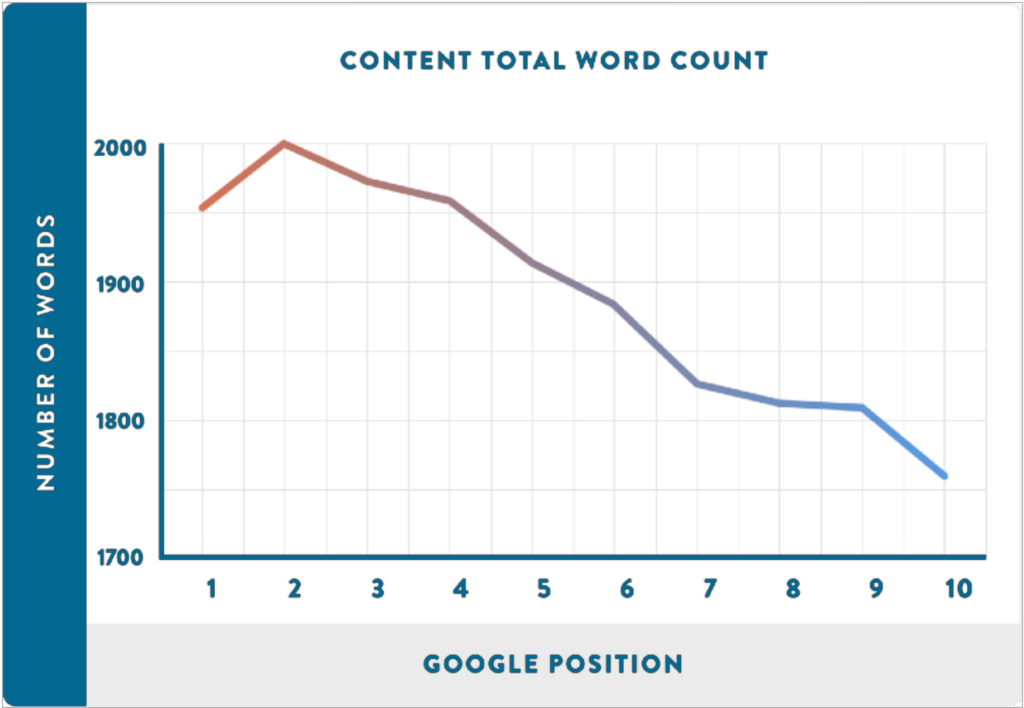How to get more traffic to your website with SEO even if Google changes their algorithm can be a minefield for business owners, so I’ve written this overview so you can understand and implement most of the strategies that work, and will continue to work, for yourself. This also is a guide for you on how to get more traffic to your website with SEO even if Google changes their algorithm.
In this article I’ve simplified what it takes to rank high in search engines with SEO even if Google changes their algorithm. All right, let’s get stuck into it…
What SEO Strategies Really Work?
You’ve probably heard that Google updated their algorithm a couple of weeks back and yes this is true. However, did you also know that this is going on all the time and it’s been going on for years – and it’s not going to change in the future.
So, given that Google will change their algorithms today, tomorrow and will still be doing it ten years from now, how can you get more traffic to your website with SEO even if Google changes their algorithm?
To separate fact from fiction, the first thing we need to do is to check out and learn from someone who knows, what really matters when it comes to ranking high in Google.
With that in mind, check out this study done by AHREFS that shows what really matters for high search engine rankings:
As you can see, it’s fairly obvious that LINKS are still the biggest factor or driving force behind high Google rankings. So, with all the panic around algorithms changing, it seems that not much has changed. To get more traffic to your website with SEO even if Google changes their algorithm, you are still going to need a good (and ever increasing) number of high-quality links, regardless.
Employing Our SEO Crystal Ball
All right, so we know that LINKS have a major impact on your Google rankings, however, in the last few years, Google’s main focus has been on trying to understand content, search intent and topics.
The goal of Google is to match a user query to the best and most appropriate answer in a returned search!
If you keep this in mind with every SEO strategy you employ, you’re never going to be far from getting it spot on.
Now getting down to it…
If Google can rate a web page based on the likelihood that it will answer the user query, then they have a new way of ranking these pages.
This is why there is now not just a focus on the “voting mechanism” or popularity of a page (via links), but also on the actual content on the page, i.e. the ability to answer the query on the users’ mind.
Google’s All Grown up Now!
There’s no doubt, search engines are getting smarter. They are not looking at searches on a keyword by keyword basis…
they are looking at the intent behind the search and understanding that some searches have the same intent.
So, what does this mean for you?
The great news is, you no longer need to build out different pages for each keyword; you can now focus on building pages based on topics and helping your customers more, as opposed to serving a search engine god.
Now Google understands that many searches and keywords are actually the same thing, so you now only have to create one page and you’ll rank for a ton of the variations. This means you will not just rank for “the number of pages on your website”, you’ll rank for all their variations, which means over time your website will be ranking for thousands of key word variations.
Beware the SEO strategist that still says, “I’ll rank you for ten keywords”. Those days are over my friend!

As Google understands “intent” of the searcher better, they won’t need to rely so heavily on links as the main ranking mechanism. There may come a day when links are no longer required, however, that day could be ten years or more away. So, let’s abide by the rules of the game today and what are likely to be the rules for the next few years at least.
The main thing you need to keep in mind, the trend we are seeing, is that pages with longer content tend to rank better. In Googles eyes, there is a greater chance that the longer page will fully explain the answer to the user query:

So, I’ll spell it out in black and white for you…
The best way to get more traffic to your website with SEO even if Google changes their algorithm is… drum roll….
….to become an authority in your niche/industry!
When you can do this, Google will “unlock the floodgates” of traffic to your web pages. So, strap in and hold on!

How To Become an Authority in Your Industry (and in Google’s Eyes)
What does it take to become and authority in Google’s eyes? To be an authority in Google’s eyes, your website needs three main things covered.
Those being:
1. Depth of Topic
You need to write long articles that fully answer the questions a user would have about that subject. This means that your blogs need to be 2000 words or longer. You’re reading an example of this now
2. A Wide Range of Topical Capacity
Simply put, write LOTS of articles on your website blog that answer all the types of questions your customers have. For example, you could write about, the Top 10 questions they ask, and the top 10 questions they should ask about certain subjects.
3. High Quality Backlinks
Links are still the biggest ranking factor for SEO; however, quality is much more important than quantity than it used to be. Keep in mind, SEO is a long-term strategy to dominating your niche, so we recommend focusing on getting lots of high-quality links to your site.
Being consistent with these three things, you will get more traffic to your website with SEO even if google changes their algorithm.
Now it’s time to put it all together…

Get More Traffic to Your Website with SEO Even if Google Changes Their Algorithm
In the past, SEO was really focused on 2 things: Keywords and Ranking – “If I rank #1 for my product keywords, then I win.”
This is not how SEO really works today.
Currently, links are the biggest ranking factor, so if you are only relying on your product or service pages, you are in trouble. It’s going to be difficult to get links pointing to your site because NO ONE wants to link to PRODUCT or SERVICE pages!!!!
However, EVERYONE wants to link to high quality articles and useful content that solve a problem or fulfil a desire for a user.
This means the better way to do SEO is to rank for key phrases that people are searching for BEFORE they are ready to buy, i.e. the questions that your customers ask you every day.
So, when you write your quality blog content, you capture way more traffic and you position yourself as an authority who people can build a relationship of trust with.
This means MAKING MORE MONEY!
All right, that’s the strategy; now you need to execute it…
Getting Started with Your SEO Strategy
The first thing you need is a website that is fast to load and is easy for people to navigate and find the information they are looking for.
This means:
1. Optimising your website’s loading speed
2. Having a menu structure that makes sense to Google
3. Make it easy for potential customers to find the information they are looking for
Now with that said, this is where it gets interesting. To be able to do these things effectively, you will need to first:

Define Your Target Audience
Before any marketing campaign, you have to define your target audience
To do this, reflect on your good customers that give you lots of money, don’t ask for much, and they are generally easy to deal with.
Then reflect on your other customers who are an absolute pain in the neck, and ask for a million things, they are cheapskates and generally, make your life difficult at best.
You can sell to both of them, but do you really want to? Probably not. I bet you would take one ideal customer over ten cheapskates, right?
Going through this process is going to help you determine what keywords you want to rank for, what kind of content you want to create. Understanding your audience will help you generate a gazillion ideas of what to rank for. Listen to your customers, listen to your market; they are conveying the answers to you all the time.
For example, when we are thinking about what content we should create, we think about what prevents our customers from buying our services straight away and we attacked it from every angle.
Here’s a few examples:
Customers come to us and they say, “I’m not ready to buy yet, I want to make an automation strategy” – So BOOM!
We write an article that says, “The six things you must automate in your business. Then they say, “OK I got the strategy, but I don’t know what software I should be using!”
BOOM – another article on “How to choose what marketing automation software for your small business.”.
Then they say, “OK but how can I write good email copy?” BOOM – another article, “Why we love copywriting and you should too!”
This goes on and on, and we just keep answering their questions.
By doing this, we create AUTHORITY and TRUST. So, when they ARE ready to buy, we already have a relationship with them.
By understanding your target market, you can answer their questions and help them solve their problems.
In the long run, this will make you a ton of money!
Keyword Research: How To Find Hundreds of Keywords to Rank For
Keyword research doesn’t have to be hard – It’s actually easy!
You can divide your keywords into two basic categories:
1. Key phrases that you’re already targeting
2. Key phrases that you’re not already targeting
To get easy wins in SEO, you can use keyword research tool to find keywords with good search volume that you’re ranking for but not in the first three places. Google already sees your website as relevant for these terms, you just don’t rank in the top 3 for them.
Next, you get busy optimising these pages and sending more links to them. This is how you can get very quick wins with your SEO rankings
Once you’ve done this…
You need to find out keywords you’re NOT ranking for yet.
To do this, you first need to find all your competitor’s websites. You can use both direct competitors (competitors that sell the exact same products as you) as well as indirect competitors (other businesses in your industry that don’t sell the same products but have the same audience).
Once you have a list of all these competitors, make a list of all the keywords they rank for and then exclude the ones that you rank for.
Now you’ll have a MASSIVE list of keywords to target and build out quality content, i.e. key phrases to include in your blogs from today moving forward.
And a special note here, don’t be afraid of using long tail keywords. In fact, these often have greater intent and convert higher, so purposely target long tail keywords, particularly early on in your SEO strategy.
On Page SEO Optimisation & Optimising Your Content
You want to build content and make sure your all your web pages are optimised with your keywords and cover the topic in depth. You need to optimise your meta tags: Title Tags, Meta Descriptions, URL, Header tags and Images
The focus here should be about building out in-depth content (that’s what Google likes to see) that answers users’ questions. Focus on creating long content 2000+ words which tends to rank better.
You should have a huge list of keywords from your earlier keyword research. Just build out content (write blogs) focused on those keywords and add internal links within your own website to that content.
As I’ve already said, when you build content that helps your target customers with their problems and questions, it’s attracting them to you. This is called inbound marketing; they are coming to you instead of you chasing them, and it will get more leads into your sales funnel.
Link Building 101
Social Profiles
Build up your social profiles – Facebook, Instagram, Pinterest, Twitter, G+ etc.). This signifies to Google that you are an actual brand. Get as many of these as you can. This will give you brand links + diversified links by just using your brand name or naked URLs (https://www.yoursite.com). When you create blogs on your site, post it to those social properties to keep natural links flowing and your social accounts active.
Directory Listings
You also want to get your business listed on as many trusted online directories as possible; directories such as Yellow Pages, Yelp and so on. These are highly trusted authorities so links from these sites will boost your rankings.
There are also more advanced link building strategies that are known as In-Content Diversity Links and High-Power Links, which are beyond the scope of this article.
Mistakes To Avoid
When building links to your content, you need to also avoid these two BIG mistakes many people make:
1. Anchor Text Ratios
The biggest problem we keep seeing is people still over-optimising anchor text (your key phrases). The simple way to avoid this is just go all out on brand signals, naked URLs, etc. Or simply, answer the questions customers have in their minds BEFORE they contact you. Doing this you’ll get a heap of natural links and you’ll only need to use a handful of exact match anchors/key phrases. Google is never going to penalize for having too diverse a portfolio of links; the more natural the better.
2. Don’t Give Up
The second biggest problem we see is people stopping or giving up on link building. Google takes time to judge your site. It can take weeks after building powerful links for movement.
If you feel you’ve plateaued, don’t worry, just keep building diversified links. Our best results are achieved by customers who we keep building links month on month on month without stopping. It’s the consistency that is going to get you the results.

Measure Your SEO Results
First, understand that SEO takes time to get significant results. It would be nice if you could build links one day and see results the next, but Google just doesn’t work like that. So, make sure you set your expectations that this is a LONG-TERM STRATEGY and don’t be concerned if it takes a few months to start seeing the significant results you want.
For your results we suggest using a combination of traffic reports from Google Analytics, Google Console and a keyword rank tracker.
Conclusion
This is how to get more traffic to your website with SEO even if google changes their algorithm.
If you follow this plan, you’ll set yourself up for massive SEO success.
How do we know?
Because this is the exact process, we use for our own customers’ SEO managed services and we are kicking goals for them month on month.
These strategies work, however, not everyone has the time to implement them themselves which is why we offer managed SEO services.
So, if you feel overwhelmed with where to start and want to have a chat about this, just reach out!
To your SEO success,
Rohan James




